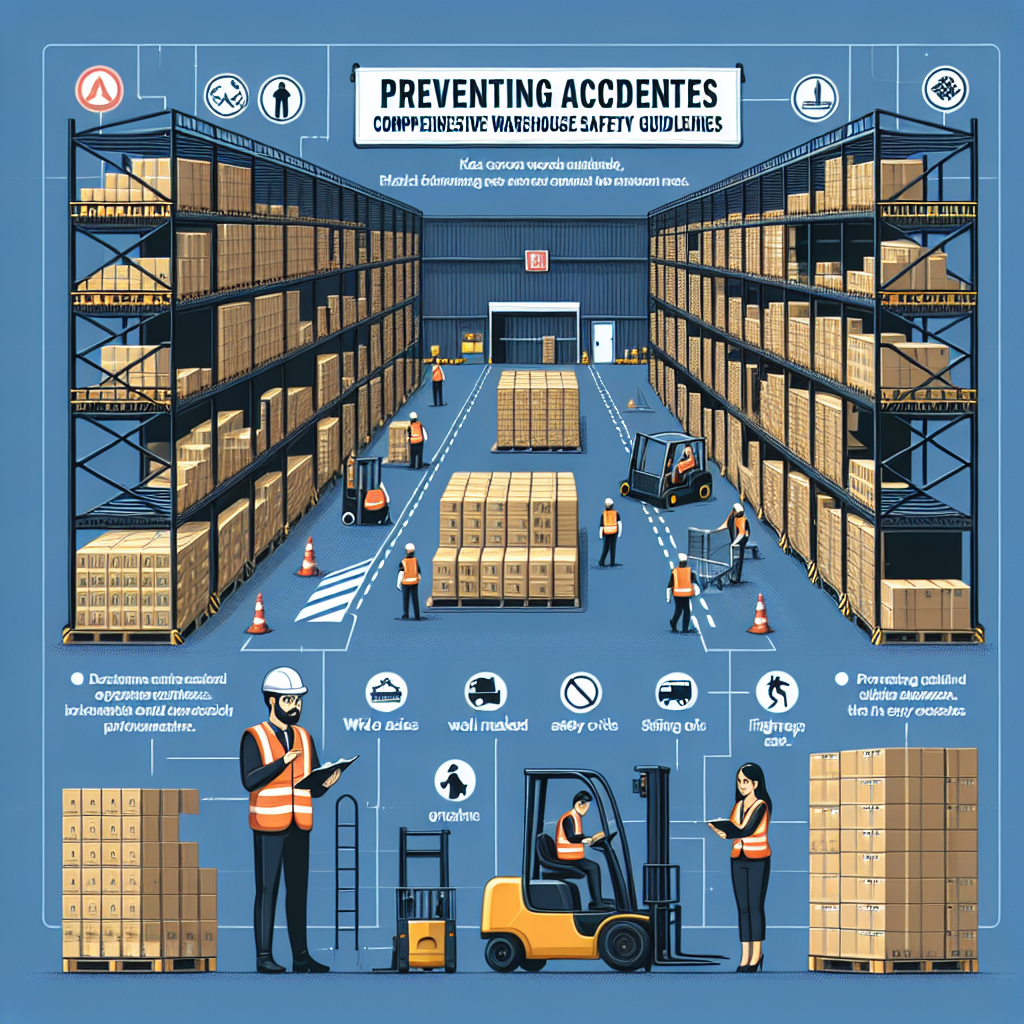In the bustling world of warehousing, efficient logistics and safe operations go hand in hand. Every day, countless employees navigate through a complex ecosystem filled with heavy machinery, high stacks of goods, and fast-paced workflows. This environment can pose serious safety risks. Thus, implementing comprehensive warehouse safety guidelines is not just a regulatory necessity; it’s a moral imperative. In this article, we’ll explore essential tips and guidelines to promote safety and prevent accidents in your warehouse.
Understanding the Importance of Warehouse Safety
Safety is everyone’s responsibility. From warehouse managers to floor workers, each individual plays a vital role in creating a safe working environment. According to OSHA (Occupational Safety and Health Administration), warehouse operations account for a significant percentage of workplace accidents. By focusing on safety, you not only protect your employees but also enhance productivity, reduce costs associated with accidents, and cultivate a positive workplace culture.
Key Elements of Warehouse Safety
1. Employee Training and Education
Ongoing training is crucial to ensuring that all warehouse personnel are well-versed in safety protocols. Regular training sessions should cover topics such as:
- Safe equipment operation
- Proper lifting techniques
- Hazard recognition
- Emergency response procedures
Make training interactive and engaging to encourage retention. Use real-life scenarios to ensure that employees can apply what they’ve learned in practical situations.
2. Proper Use of Personal Protective Equipment (PPE)
The right personal protective equipment can make a significant difference in preventing injuries. Ensure that employees have access to and wear appropriate PPE, which may include:
- Hard hats
- Safety goggles
- High-visibility vests
- Steel-toed boots
- Gloves
Regularly inspect PPE for wear and tear, and replace any damaged items promptly.
3. Organizing the Warehouse Layout
An organized warehouse is a safer warehouse. Here are key considerations for layout optimization:
- Clear Walkways: Ensure that walkways and emergency exits are always free from obstructions.
- Adequate Signage: Use clear, visible signs to indicate hazards, exits, and equipment zones.
- Proper Stacking: Teach employees how to stack materials securely, maintaining a low center of gravity to prevent tipping.
4. Equipment Safety Checks
Regular maintenance checks on warehouse equipment are critical to ensuring safe operations. Implement a routine maintenance schedule that includes:
- Forklifts, pallet jacks, and conveyor belts
- Fire extinguishers and safety alarms
- Shelving systems and storage racks
Encourage employees to report any equipment issues immediately and create a culture that prioritizes safety over shortcuts.
Creating a Safety Culture
Establishing a safety-first mentality within your warehouse starts at the top. Here are ways to foster a culture of safety:
1. Lead by Example
Management should actively demonstrate commitment to safety. Participate in safety training, follow protocols, and acknowledge safe practices. Your actions set the tone.
2. Encourage Open Communication
Create an environment where employees feel comfortable reporting hazards or suggesting improvements. Implement regular safety meetings to discuss potential risks and solutions collaboratively.
3. Recognize Safe Behavior
Acknowledging and rewarding safe behavior can motivate employees to prioritize safety. Consider a safety incentive program that includes recognition for teams or individuals who consistently adhere to safety protocols.
Emergency Preparedness
Despite the best efforts, emergencies can still occur. Have a comprehensive emergency response plan in place, including:
- Fire evacuation procedures
- First-aid protocols
- Reporting procedures for accidents or near-misses
Conduct regular drills to ensure all employees understand their roles in emergencies.
Conclusion
Preventing accidents in warehouses is a collective effort that requires commitment, education, and proactive measures. By following these comprehensive warehouse safety guidelines, you can create a safer work environment that protects your employees and enhances productivity. Remember, safety is not just a checklist; it’s a culture that needs to be nurtured daily. Together, let’s build a safer warehouse for everyone involved.
By implementing these strategies and fostering a safety-centric culture, you not only comply with regulations but also care for the well-being of every individual who contributes to the success of your warehouse operations. An accident-free warehouse is a more productive warehouse—let’s work together to make safety a priority!


